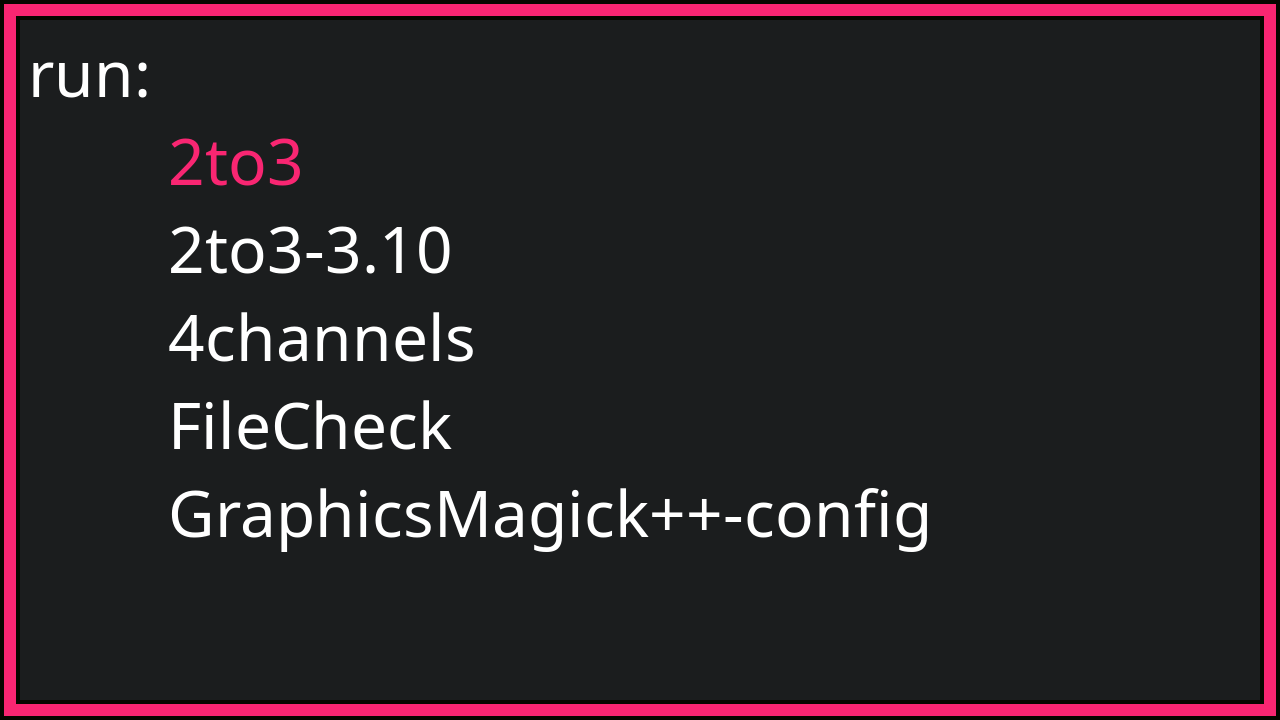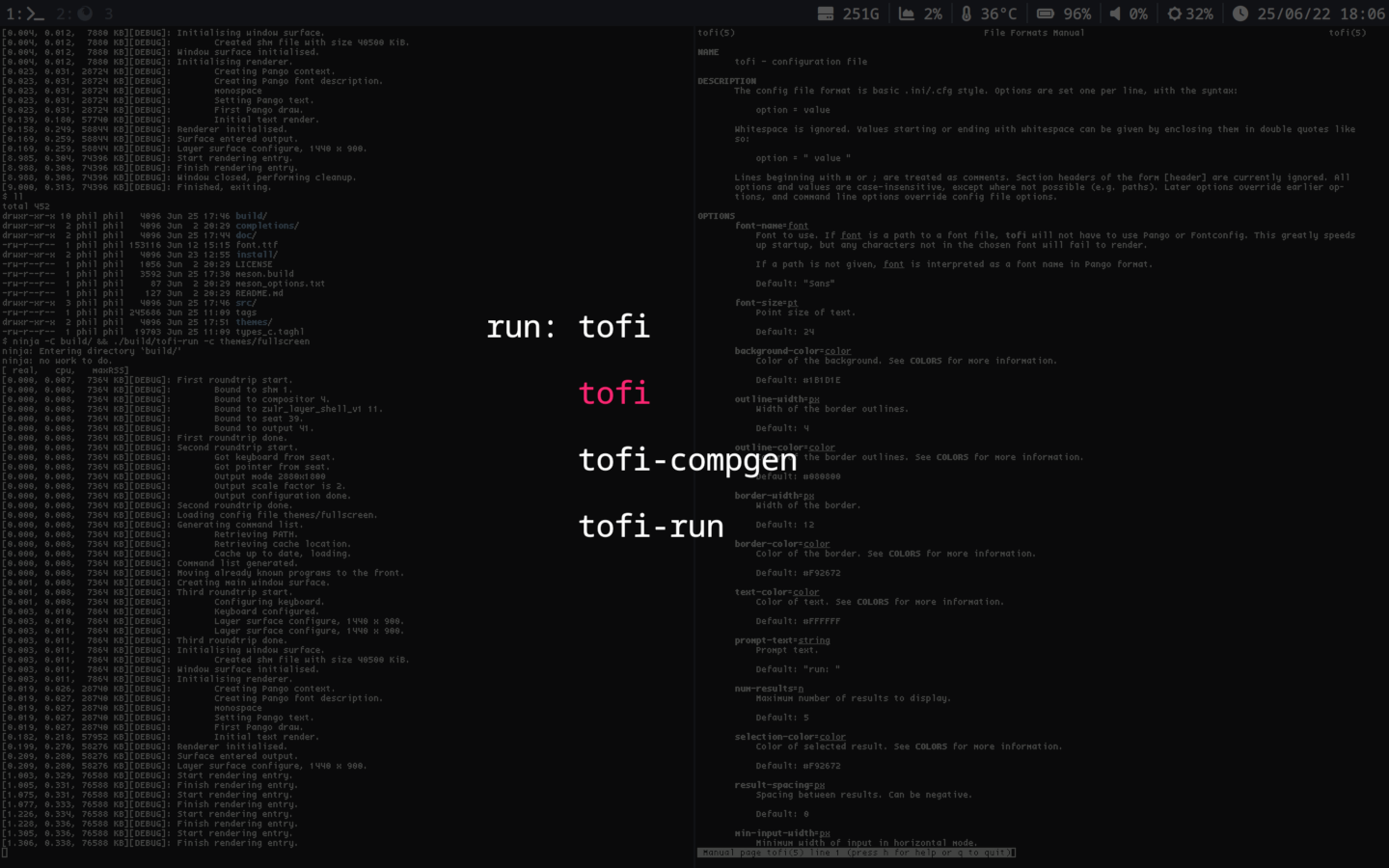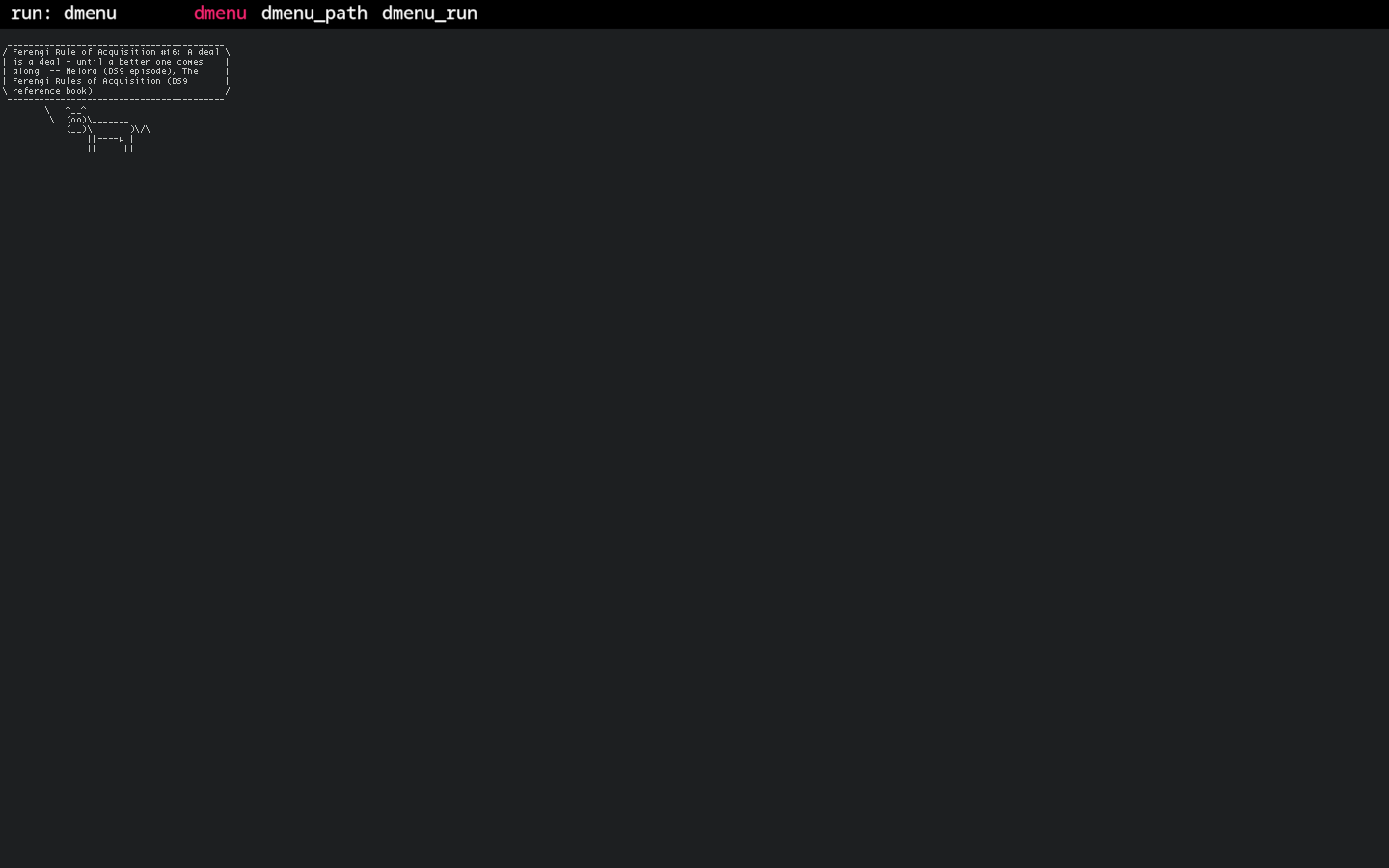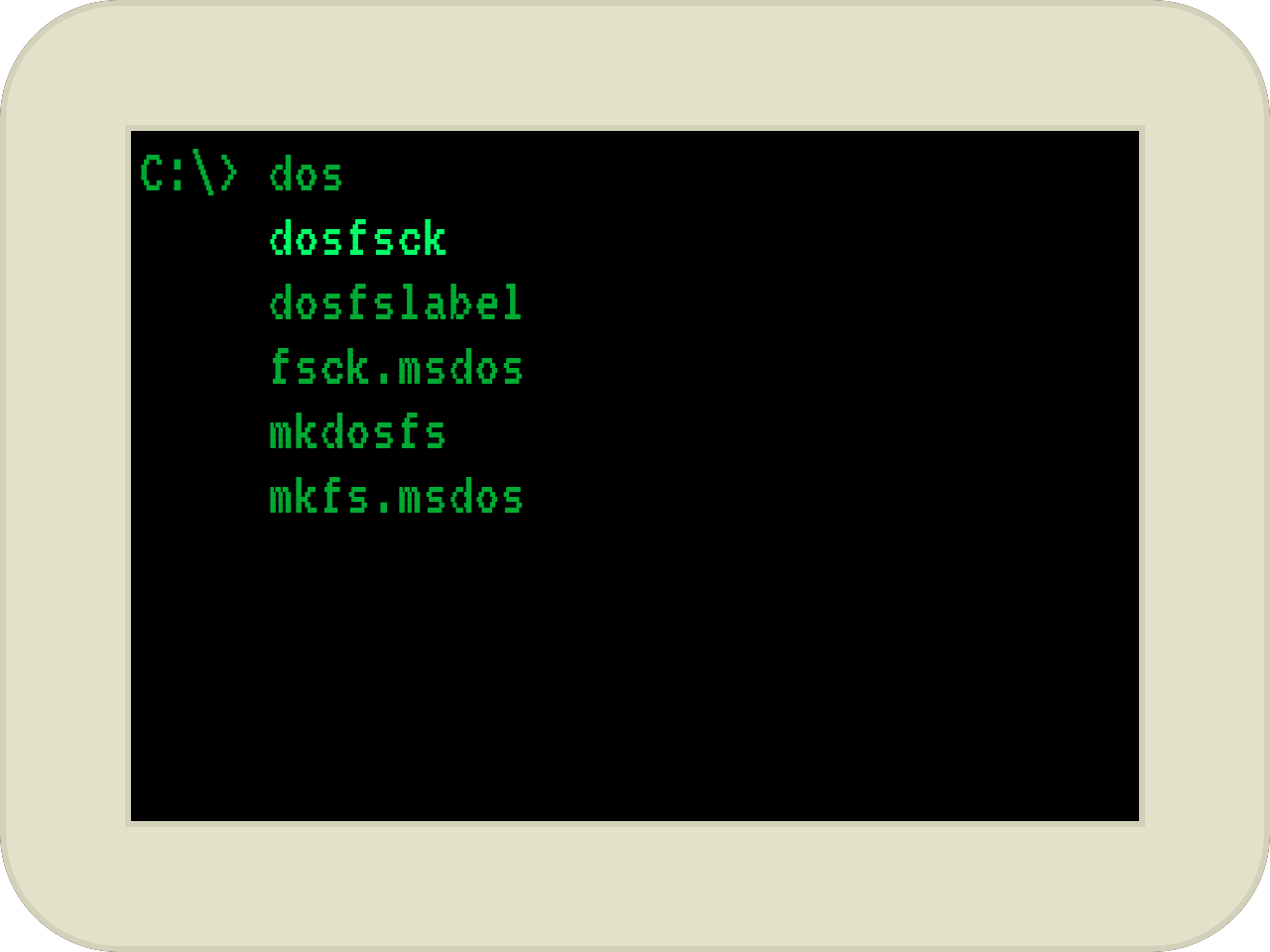An extremely fast and simple dmenu / rofi replacement for wlroots-based Wayland compositors such as Sway.
The aim is to do just what I want it to as quick as possible.
When configured correctly, tofi can get on screen within a single frame.
Install the necessary dependencies, e.g. for Arch:
# Runtime dependencies
sudo pacman -S freetype2 harfbuzz cairo pango wayland libxkbcommon
# Build-time dependencies
sudo pacman -S meson scdoc wayland-protocolsThen build:
meson build && ninja -C build installTofi is available in the AUR:
paru -S tofiBy default, running tofi causes it to act like dmenu, accepting options on
stdin and printing the selection to stdout.
tofi-run is a symlink to tofi, which will cause tofi to display a list of
executables under the user's $PATH.
To use as a launcher for Sway, add something similar to the following to your Sway config file:
set $menu tofi-run | xargs swaymsg exec --
bindsym $mod+d exec $menu
See the main manpage for more info.
Tofi supports a fair number of theming options - see the config file
manpage for a complete description. Theming is based on the
box model shown below:
 This consists of a box with a border, border outlines and optionally rounded
corners. Text inside the box can either be laid out vertically:
This consists of a box with a border, border outlines and optionally rounded
corners. Text inside the box can either be laid out vertically:
╔═══════════════════╗
║ prompt input ║
║ result 1 ║
║ result 2 ║
║ ... ║
╚═══════════════════╝
or horizontally:
╔═══════════════════════════════════════════╗
║ prompt input result 1 result 2 ... ║
╚═══════════════════════════════════════════╝
A few example themes are included and shown below. Note that you may need to tweak them to look correct on your display.
By default, tofi isn't really any faster than its alternatives. However, when configured correctly, it can startup and get on screen within a single frame, or about 2ms in the ideal case.
In roughly descending order, the most important options for performance are:
-
--font- This is by far the most important option. By default, tofi uses Pango for font rendering, which (on Linux) looks up fonts via Fontconfig. Unfortunately, this font lookup is about as slow as wading through treacle (relatively speaking). On battery power on my laptop (Arch linux, AMD Ryzen 5 5600U), with ~10000 fonts as the output offc-list, loading a single font with Pango & Fontconfig takes ~120ms.The solution is to pass a path to a font file to
--font, e.g.--font /usr/share/fonts/noto/NotoSansMono-Regular.ttf. Tofi will then skip any font searching, and use Harfbuzz and Cairo directly to load the font and display text. This massively speeds up startup (font loading takes <1ms). The (minor for me) downside is that any character not in the specified font won't render correctly, but unless you have commands (or items) with CJK characters or emojis in their names, that shouldn't be an issue. -
--width,--height- Larger windows take longer to draw (mostly just for the first frame). Again, on battery power on my laptop, drawing a fullscreen window (2880px × 1800px) takes ~20ms on the first frame, whereas a dmenu-like ribbon (2880px × 60px) takes ~1ms. -
--hint-font- Getting really into it now, one of the remaining slow points is hinting fonts. For the dmenu theme on battery power on my laptop, with a specific font file chosen, the initial text render with the default font hinting takes ~4-6ms. Specifying--hint-font falsedrops this to ~1ms. For hidpi screens or large font sizes, this doesn't noticeably impact font sharpness, but your mileage may vary. This option has no effect if a path to a font file hasn't been passed to--font. -
--late-keyboard-init- The last avoidable thing that slows down startup is initialisation of the keyboard. This only takes 1-2ms on my laptop, but up to 60ms on a Raspberry Pi Zero 2 W. Passing this option will delay keyboard initialisation until after the first draw to screen, meaning that keypresses will be missed until then, so it's disabled by default.
Below are some rough benchmarks of the included themes on different machines.
The time shown is measured from program launch to Sway reporting that the
window has entered the screen. Results are the mean and standard deviation of
10 runs. All tests were performed with --font /path/to/font/file.ttf and
--hint-font false.
| Theme | ||||
|---|---|---|---|---|
| fullscreen | dmenu | dos | ||
| Machine | Ryzen 7 3700X 2560px × 1440px |
9.5ms ± 1.8ms | 5.2ms ± 1.5ms | 6.1ms ± 1.3ms |
| Ryzen 5 5600U (AC) 2880px × 1800px |
17.1ms ± 1.4ms | 4.0ms ± 0.5ms | 6.7ms ± 1.1ms | |
| Ryzen 5 5600U (battery) 2880px × 1800px |
28.1ms ± 3.7ms | 6.0ms ± 1.6ms | 12.3ms ± 3.4ms | |
| Raspberry Pi Zero 2 W 1920px × 1080px |
119.0ms ± 5.9ms | 67.3ms ± 10.2ms | 110.0ms ± 10.3ms | |
The table below additionally includes --late-keyboard-init in the arguments.
| Theme | ||||
|---|---|---|---|---|
| fullscreen | dmenu | dos | ||
| Machine | Ryzen 7 3700X 2560px × 1440px |
7.9ms ± 1.0ms | 2.3ms ± 0.8ms | 3.8ms ± 0.8ms |
| Ryzen 5 5600U (AC) 2880px × 1800px |
13.4ms ± 0.8ms | 2.6ms ± 0.5ms | 5.5ms ± 0.51ms | |
| Ryzen 5 5600U (battery) 2880px × 1800px |
21.8ms ± 1.8ms | 3.6ms ± 0.7ms | 8.1ms ± 0.7ms | |
| Raspberry Pi Zero 2 W 1920px × 1080px |
98.3ms ± 5.7ms | 44.8ms ± 16.3ms | 87.4ms ± 9.9ms | |


